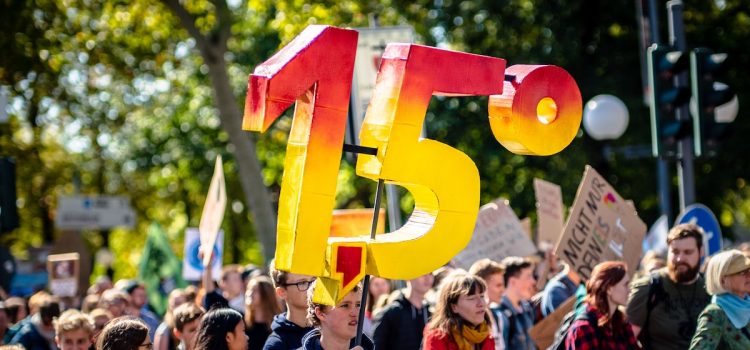

This article is an excerpt from the Shortform book guide to "False Alarm" by Bjørn Lomborg. Shortform has the world's best summaries and analyses of books you should be reading.
Like this article? Sign up for a free trial here.
What promise did countries make with the Paris Agreement? Is the Paris Agreement effective?
To spark the green revolution, world leaders took a more concrete approach to climate change via the Paris Agreement. However, Bjorn Lomborg argues that, if the goal is to achieve a meaningful and cost-effective reduction in global temperature, it’s a failure.
Continue reading to see how Lomborg comes to this conclusion.
Is the Paris Agreement Effective?
With the Paris Agreement, participating countries promised to reduce carbon emissions, with a goal of limiting the global temperature increase to 3.6°F by 2100. Is the Paris Agreement effective? Lomborg argues that it does more harm than good.
(Shortform note: In light of concerns over the Paris Agreement, the U.S. withdrew from the agreement in 2020, three years after President Donald Trump first announced his decision to withdraw in 2017. However, this absence was short-lived, as the U.S. rejoined the climate accord shortly after President Joe Biden’s inauguration in 2021.)
First, Lomborg examines the four entities whose promised carbon reductions amount to 80% of the total reductions outlined in the Paris Agreement: the U.S., the EU, China, and Mexico. By using Stanford University’s Energy Modeling Forum (EMF), Lomborg estimates the following costs if these countries keep their promises:
- The U.S.’s promise to cut emissions by 26% by 2025 will cost between $154 and $172 billion annually.
- The EU’s promise to cut emissions by 40% by 2030 will cost $322 billion annually.
- China’s promise to reduce carbon intensity—the percentage of carbon emitted per dollar in the economy—by 60% by 2030 will cost $200 billion annually.
- Mexico’s promise to reduce 40% of carbon emissions by 2030 will cost $80 billion annually.
Collectively, this amounts to about $739 billion annually. Because these countries represent 80% of promised carbon reductions, Lomborg assumes that $739 billion is about 80% of the total annual cost of the Paris Agreement. So, its annual cost is around $1 trillion.
(Shortform note: Lomborg also considers another assessment, where the Paris Agreement costs twice as much—$2 trillion annually—because countries implement inefficient climate policies. However, others have argued that it’s illegitimate for Lomborg to simply double projections to strengthen his argument. To avoid this criticism, we’ll focus on his assessment of the model’s actual predictions.)
To see whether the benefits of the Paris Agreement justify the costs, Lomborg cites projections from the UN, which found that—if countries all kept their promises—there would be 64 fewer gigatons, or 64 billion fewer tons, of CO2 in the atmosphere by 2030. Because the UN estimates that temperature will rise 0.8°F for every 1,000 gigatons, Lomborg reasons that the Paris Agreement could reduce global temperature by 0.05°F.
If countries extended their commitments to 2100, however, Lomborg concedes that we would remove 540 gigatons of CO2 from the atmosphere, causing a 0.4°F reduction in temperature. But, because the temperature is expected to rise 7.4°F by 2100, this reduction still means it would actually rise 7°F—nowhere near the stated goal of 3.6°F.
(Shortform note: Climate scientists from the UN generally agree that the Paris Agreement won’t reach its goal of 3.6°F, even if countries meet their promises. However, the UN’s 2022 report disputes Lomborg’s claim that temperatures will rise 7°F by 2100 under the Paris Agreement. Rather, the report found that temperatures are expected to rise between 3.8°F and 5.2°F by 2100. So, Lomborg’s predictions aren’t universally agreed upon.)
Consequently, Lomborg concludes the Paris Agreement is ineffective; even if every country kept its promises, it would yield minuscule progress, while costing $1 trillion per year.

———End of Preview———
Like what you just read? Read the rest of the world's best book summary and analysis of Bjørn Lomborg's "False Alarm" at Shortform.
Here's what you'll find in our full False Alarm summary:
- Why climate change isn't as cataclysmic as people think
- The unintended costs that come with climate activists’ proposed approaches
- A look at the most promising approaches to climate change






